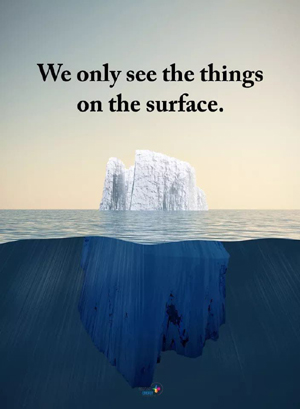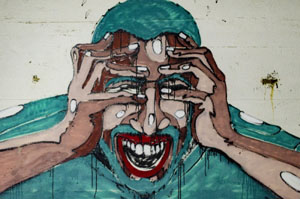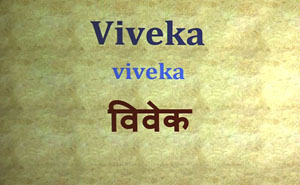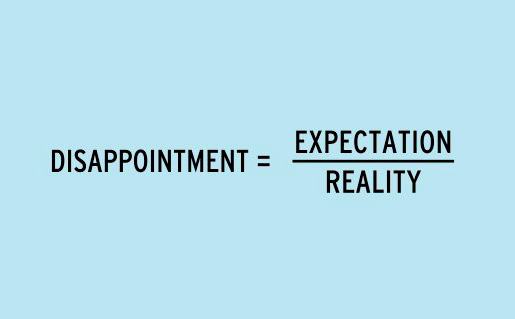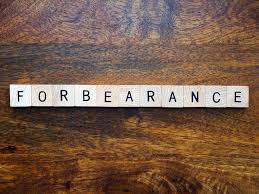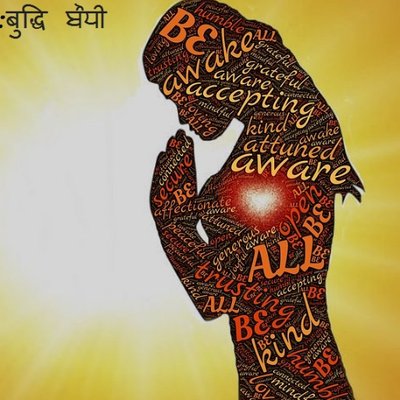Consciousness and health
The nature of higher life
Abstract
Ordinary people look at the surface of things and reach conclusions. But yogic sciences have their own categorisation of sense-data and the conclusions that are derived from a yogic perspective become practical tools to deal with critical problems and situations. A classification of life is taken up in this article. Readers may refer to an earlier issue of NAMAH and read more about this in the article, ‘The Wheel of Lower Life’.*
The lower life is a life overpowered by animalistic instincts and is imbued with the six sinister emotions of kāma(lust), krodha (anger), lobha(greed), moha (infatuation), mada (aggrandisation) and mātsarya (envy), which serve as powerhouses of negative energy and operate cyclically till all the subconscient motives of life are exhausted. The attraction towards lower life is so strong that even man, the most evolved being gifted with the faculty of mind, cannot escape but surrenders to this evolutionary nisus as long as he does not free himself through a spiritual knowledge of the cause of his birth or exercises a strong mental will against these evil interferences (through sādhanā) and selects a course of life that suits his cause of birth. The downward pull brings man and his mind to the memories of the primitive lifestyles of bacteria, worms and animals, which play back from the subconscient as if they were inerasably recorded and they have to be necessarily decoded from his genes in order to erase them from the deep memory of the being and help him evolve further.
Life as a phenomenon seems to be flowing in unison but there are diverse streams involved in it and they become distinct once we focus a clear eye on them. The spiritual purpose behind each aspect of life is known only when all these streams are known and mastered and till then even spiritual life is bridled by mental opinions and beliefs.
A sublimation of these sinister emotions begins to occur as a sense of observation and detachment allows mind and thought to come in and guide the vitality. The higher life is the mastery over these animalistic behaviours to achieve higher goals. Mind, a plane of consciousness higher than life, begins to come into touch with the higher life but it is allowed only for a subservient purpose of helping it. The vitality in higher life uses mind as a lever to unleash its capacities but does not obey it as its master. It dictates the mind to serve its purposes or listens to the mind only for its pleasant soothsaying capacity but does not care to analyse each and every moment and attain perfect control over the external movements under the mind`s light. Even the opposite may happen that an imperfect mind without sufficient foreknowledge or spiritual authenticity may guide the vitality to its peril, a catastrophe so commonly seen in day-dreamers and luck-believers.
Ego, the joystick of life, assumes a new name, the personality, in higher life but a dissection of the personality reveals the same motives of ego in heightened proportions. The higher life reaches its culmination only when the mind understands that the ego is a temporary representation of the self and the death of ego or the lower self allows the being to enter into wideness of thoughts and embrace universal powers that operate through and guide limited personalities. The higher life ultimately helps in opting for a spiritual life, which is not punctuated by death any more as death transforms itself into punctuated memories called `experiences`, sometimes in a waking state, sometimes in a sleep state but most evidently in the state of samādhi where the individual life is an eternal continuum of universal life and ego is completely dissolved and personality remains only as a frame of action. These spiritual experiences are the ‘time-loops’, where past, present and future consummate into an eternal continuum and the inner space begins to engulf outer space. Our inner being accidentally or wilfully enters, visualises and experiences the whole sensory content of a spatio-temporal phenomenon that is spread before the ten motor and sensory appendages of a living being by the influence of the universal life energy that ceaselessly connects stellar and planetary movements with terrestrial movements.
An inevitable urge in universal nature pushes every living being to move out of the cyclical impermanence of lower life into the affirmative permanence of higher life. But this journey into higher life is so tardy and complex that often one slips back into the lower life and is forced to start the upward journey again. As the higher life reaches its culmination, the person begins to experience the permanence of his spiritual self. He understands that the causal beginning of every movement of his life lies in him and he is left alone to himself either to act on his own or to follow the compelling stream of the outer world. He feels sufficiently enriched with inner experiences that awaken the knowledge continuum of the outer world with his inner self and he is forced to journey further into the inner recesses to reach the spiritual source of all existence.
Effortful living is common for both lower and higher life. But higher life, unlike the dualistic mode of lower life, rests upon the triune of memories (smṛti) of successes and failures, analysis (viveka) of these memories and of each upheaval that is about to come, and the right discrimination (buddhi) of the line of action that is to be followed. Thus, each cycle is an event that starts as action and culminates into an appropriate thought that governs the action. But linking the action with the appropriate thought, the crucial act of buddhi, is achieved more by accident or providence than by individual effort.
Smṛti or memory, a faculty of the mind, like all other faculties of a being, is at once individual and cosmic. In its origins, it occurs like a flash which is erased in no time but when it leaves its imprint on the citta, the deep-seat of the heart where all vital emotions find free play, it lingers for a while before it fades out. Viveka or analysis is that part of the mind which collects all these memories, plays with them back and forth and puts them in order and synthesises new thoughts by linking and delinking the gathered memories. Buddhi or discrimination is an inherent part of the mind as its function is linked with thoughts and thinking but owing to its superiority in function, it is considered independent and superior to mind by some schools of yoga. The role of buddhi is to filter thoughts that are not in coherence with at least three sensory inputs and allow only those thoughts that are in coherence with three or more faculties of sense. Thus is the cycle of thought and action formed and this cycle breaks the knots of the lower vital and shows the way to higher life.
This triune function of mind has a similarity with the nature of the replication of chromosomes, resulting in the recycling of proteins and the effective maintenance of the humoral system. The transcription of DNA indicates the arousal of memory of the cells in creating new proteins. Translation of these memory strings by ribosomal RNA involves matching them with appropriate amino acids and this process has a resemblance of the analytical behaviour of the cellular apparatus that finds appropriate amino acids that match with the shape of the protein to be built. Post-translational modification of these half-perfect proteins mimics the filtering process of buddhi at a cellular level and happens by a synchronistic process between messenger RNA, transfer RNA and the parent chromosomes. This helps in fine-tuning the shape of proteins and only then are the newly created proteins absorbed into the humoral system. This is only an aspect of the simulation that exists between the cellular and body level behaviours and there are so many differences too between these two levels that the study of these similarities has to be taken up more thoroughly to prove the adage that microcosmos resembles macrocosmos.
The exercise of higher life has the inherent advantage of coming into tune with higher and higher ranges of mind, where thought organises life and provides moulds to live in. Effort always results in either success or failure. But both have a lesson to teach. Lower life with its animalistic arrogance does not care to learn. It is this instinctual tendency to learn that differentiates higher life from lower life. Once instigated, this instinct to learn differentiates man from the animal within and pushes him out of the wheel of a lower life that is caught in the earth stuff and into the cycles of a higher life where life is better organised in tune with universal rhythms. The higher life absorbs failure and death into it and grows wise with the mind`s help so as to live again and thus retains its tenfold permanence.
The behaviour of higher life and the growth of personality
The journey of man out of his animal past and his growth into a perfect man is enacted in 10 sequential steps that are sometimes haphazardly taken up but can be inferentially traced into one or other phases of this tenfold development. Each of the six sinister emotions and three functions of the mind too are tested and perfected as they are subjected to maximum use in the effort of the man to grow along this tenfold path. A sequential observation of this tenfold growth helps in greater self-perfection and the ultimate spiritual perfection.
1. Hunger and satiety are two extremes of each instinct. In the lower life, satiety again leads to hunger whereas interestingly in the higher life, hunger leads to a positive state of contentment. This happens because the motor functions which overwhelm the mind and life with mechanical and monotonous signals begin to act in unison with their corresponding gnostic functions, that bring pleasantly variable sensory signals. In the course of time, instincts begin to get sublimated into emotions and feelings. The value of contentment as a sensory phenomenon is so refreshing that the person starts to move away from the six sinister emotions and cherishes to live in this positive state more and more.
2. Contentment, a positive emotion, in turn craves for a host of other positive emotions like sincerity towards oneself and others, responsibility towards acts and deeds, courage to pursue new paths, affection towards one’s neighbourhood, etc. and the person goes in search of people or groups living in positive emotions. Work gives an opportunity to churn his motor power into a useful lever for social comfort and man begins to bring contentment and a host of positive feelings into the society around through his work. In course of time, work becomes a means of earning a livelihood and thus becomes a compulsion, a compulsion as strong as other animalistic instincts but refined and sublimated in its expression and function. But work serves its utility when it is shared and supported by the people around. Thus social living becomes another compulsion.
3. The struggle for existence as a method of life on earth lasts only as long as the ego establishes its supremacy in the society it lives. This is essentially a phenomenon of lower life — an early phase — the animalistic phase of life. As man begins to live with his society, his ego too grows along with the growth of his stature in the society. The ego makes him feel that he and the world he lives in are two different and unrelated movements and urges him to struggle against the world and grow up to a stature that is equivalent to the world or surpasses the world. Once his ego becomes more powerful than the world, even to a partial extent, this struggle is often automatically directed towards the internal environment as the fundamental cause for this struggle lies within and that is the reluctance of the ego to die. Gradually the person, with the help of his mind, learns where to let his ego flow around and where to curtail its movements. When this control over the ego increases, the person is said to have developed a personality, the mental coat over one`s ego and its movements. In its definition, the personality is the accumulation of all the retreating memories of ego, counterbalanced by the memories of competitive excellence. Though the word ‘ego’ is interchangeably used for the personality, the substance of personality is a mental admixture of do’s and don’ts in reference to the particular society in which the person lives, in contrast to the ego whose stance lies in a cyclical expression of six sinister emotions irrespective of time and space.
4. As a person grows in his stature in society, he develops friends and foes around him. By making associations that allow it to rise in power, the person tries to overpower the world each time it gets such an opportunity. Culturally, this is reflected in the migration of men out of their aboriginal life to larger towns and cities where lifestyles are interwoven between people based upon their personal talents and multi-talented people have a greater scope to live rather than the people with limited talents. Institutions of life based on man’s thinking faculties like education, administration, essential services and industry, etc. serve as practical means to support this growth of higher life out of its lower stumblings. All our talents are soul-gifts to which we may be connected accidentally for strange reasons but they can be made our permanent accompaniments if we tune into our intuitive faculties, which operate when our limited egoistic nature grows harmonious with the larger world-nature around.
5. But the higher life is busy with the question of self-affirmation rather than soul-affirmation. It speedily cuts across the egos around to reach its position and affirms its seat by a connivance mixed with friendliness, superiority and necessity than following the soul-inclination and creating free space for itself and the egos around. In this eagerness to grow, it overlooks the lower life around or ignores it or learns to tactically avoid it. But the lower life is never at rest and acts with vengeance against the growth of the higher life and pulls it down into an abyss.
6. At the end, the ego overpowered by desires, fails or dies inevitably as Mother Nature thrives on harmonious alliances and not atrocious autocracies. The ego affirms the individual existence by an urge to grow overpoweringly large through the agency of six sinister emotions. It places the person ahead against the backdrop of a group of persons, be it a society with mixed inheritance or a family with similar inheritance and establishes a concrete sense of duality between itself and the outer world-nature. Though ego always encourages this competitive and dualist behaviour, the person often fails and retreats on many levels to meet the expectations of this competition owing to his own inability or because of adverse circumstances that prevail in the group he lives. This retreating behaviour saves the person from total damage and teaches him to adjust to the society around. Each desire is put a check in the name of an ideal and the realm of ideals supercedes the realm of desires in the course of time.
7. Personality works upon expectations and disappointments just as ego works upon hunger and satiety. Thus the personality is the vice-regent to the ego as long as it does not adopt the behaviour of acceptance, a feeling much higher when compared to its two other dualistic inferior modes and an emotional equivalent of contentment. Desires and ideals are the two standards between which the personality struggles to win or lose the opportunity. Desires are the ego’s unswerving demands from life and ideals are the mind`s gauge over the ego’s desires. The higher life may tilt its balance towards vital demands than mental ideals and then the personality turns to be rākṣasic. On the other hand, a daivic personality is dominated in its behaviour by the idealistic mind which brings sāttvic (balanced approach) correction to rākṣasic dynamism.
Desires are the offsprings of the cosmic urge for random but effective growth, whereas ideals are the outcomes of giving a perfect shape to that cosmic urge. The cosmic scheme sometimes supports the growth aspect of it and sometimes the aspect of perfection. In ephemeral existence, war of values ensues as both growth and perfection are randomly supported by the cosmic movements and they miss the tune of manifestation. Ephemeral existence is filled with imperfections and measures of correction like pain, defeat and death become a necessary evil for every soul to shape itself into perfection. Thus both rākṣasic and daivic modes of personalities are justified and considered positive in the cosmic scheme of creation and belong to the mode of higher life, because both of them have legitimate roles in the cosmic creation. As life moves to higher spheres touching the indestructible cosmic rhythms, personality assumes a positive and affirmative role, be it a rākṣasic personality dominated by desires or a daivic personality aiming for mastery over things or self-mastery. A positive personality thus begins to master the movements of ego and use it as the sublimative fuel for the upward journey. It forces the ego to accept the society around and adopts a ‘give and take’ approach. It tries to strike harmony between itself and the society, the determinative quotient of the external world.
8. Even this sense of harmony occurs in phases. The first phase is mere forbearance, though sometimes a calm forbearance (titikṣā). A gradual detachment from the six sinister emotions becomes possible hereafter and dispassion (udāsinatā) also becomes a natural state of mind. Thankfulness and obedience (namas) of the mind to a higher force is the third attribute that is added to the personality. There appears on the horizon of growth a phenomenon more natural and efficient that grows without effort and all individual growth is the reflection of this universal phenomenon of growth. It is by growing into resonance with this universal phenomenon and striking an inner balance with this phenomenon that all growth becomes sustainable.
9. As the personality peeps into these inner recesses, the six sinister emotions tend to become weak and begin to transform themselves into their positive counterparts. But for this gentle movement of inner realisation to happen, the ego has to forego and dissociate from the personality, the mental formation that has been helpful for the ego by supporting its movements, by protecting it from dangers, by making fruitful associations, by fuelling its motives and by strengthening its ground.
10. The formation of personality is a rather automatic process of accretion chiefly determined by the spatio-temporal limitations of the society around than by a harmonious interplay between the ego and the larger world which comprises primitive plant and animal life. The personality is habituated to talk to its immediate next personalities and apply modesty in ‘give and take’ phenomena, but its mind cannot communicate with the larger nature around and adopt the policy of endless giving amounting to a complete sacrifice, the patent process of permanence which all cosmic rhythms follow. Thus personality becomes a hindrance to its own goal of achieving permanence. To forego personality and reach impersonality is the next goal set before the being to which both the ego and personality deny their acceptance. Here the belief-system like religion or the self-learning nature of the mind, which laboriously gathers sensory knowledge from around, stand as obstacles for inner learning and surpassing them is a major and first step.
The issue of the second phase of growth is to ease itself out of this mental struggle and aim at the perfection of the three faculties of the mind — memory (smṛti), analysis (viveka) and discrimination(buddhi) and master the ten conduits of life-energy — the motor and sensory functions — locomotion, ingestion, egestion, speech, procreation and olfaction, taste, vision, hearing, and touch respectively.
At the end of the higher life, one is ready to enter the door-step of spirituality which one might be already following as a set of religious beliefs or fall back to the lower life once again if the basic structure of the edifice is yet to be corrected and strengthened.
*Volume 28, Issue 3: 2020, pp. 13-19.
Dr. Venkatesh Palla, a member of SAIIIHR, is a practising homoeopathic physician at Bhimavaram, Andhra Pradesh, India.
Share with us (Comments,contributions,opinions)
When reproducing this feature, please credit NAMAH,and give the byline. Please send us cuttings.

